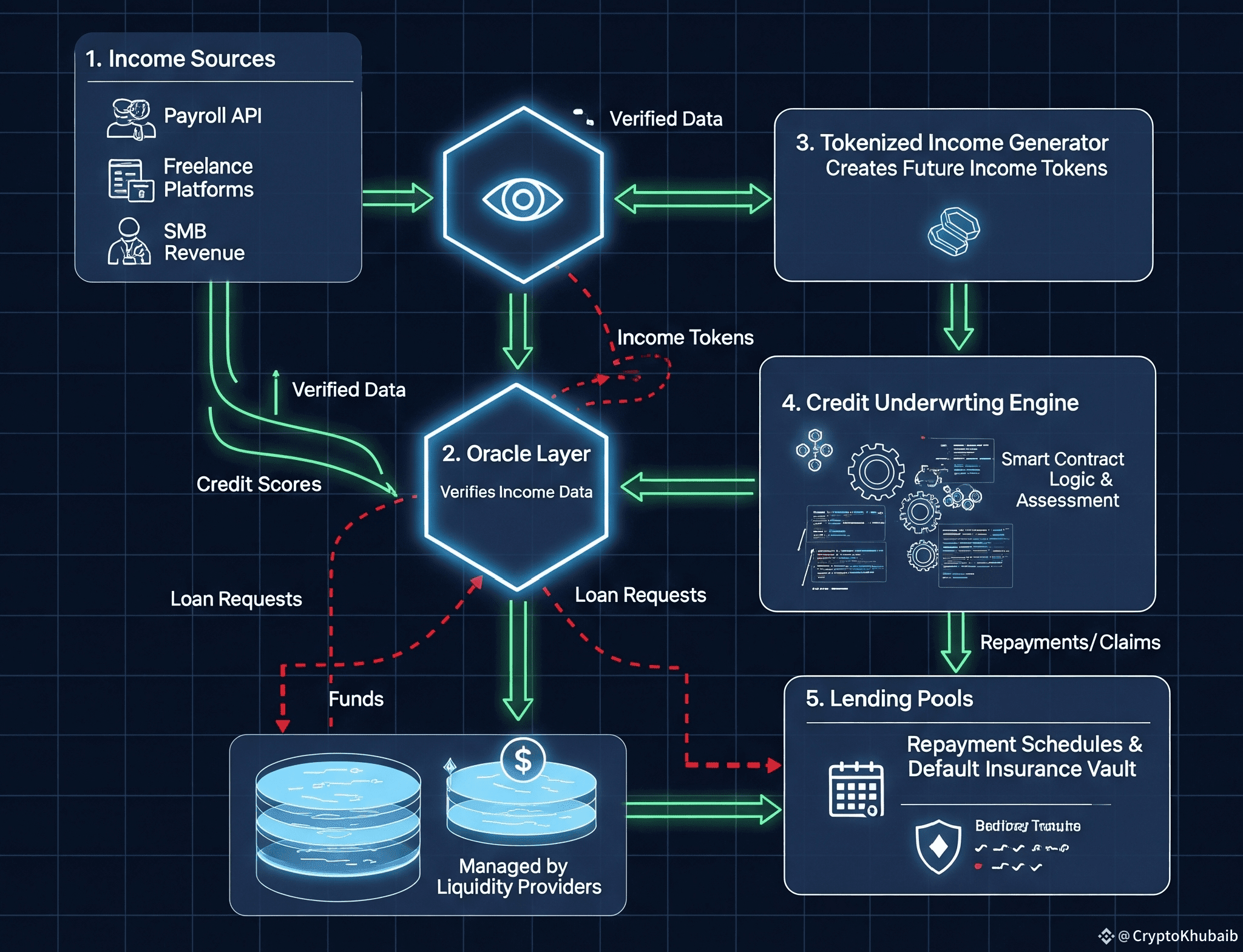🧾 What Is Huma Finance?
Huma Finance is a decentralized protocol that brings real-world assets (RWAs) and income-based lending into DeFi. Instead of relying solely on overcollateralized crypto assets, Huma enables under-collateralized loans based on verifiable income flows — such as salary, freelance earnings, or business revenue.
By connecting borrowers and lenders via tokenized income streams, Huma unlocks a new frontier in credit — one rooted in economic activity, not just crypto holdings.
🧠 Technical Architecture: How Huma Finance Works
At its core, Huma’s system consists of four key technical components that work together to enable programmable credit on-chain:
1. Income Verification Layer
Integrates with off-chain data sources (like payroll APIs, accounting platforms, or Web2 banking)
Verifies income through oracles and attestations
2. Smart Contracts for Tokenized Income
Converts verified income streams into fungible, transferable income tokens (ITs)
These ITs represent future earnings and are used as collateral
3. Credit Underwriting Engine
Assesses income token value, borrower history, and risk metrics
Uses machine-learning-informed scoring models
4. Lending Pools
LPs stake stablecoins (e.g., USDC) into sector-specific pools (e.g., payroll-backed, freelancer-backed)
Loan execution via smart contracts with automated repayment schedules
This framework enables risk-weighted, recurring-income-based lending — a sharp contrast to typical DeFi models that depend on crypto price volatility.
🔎 Use Case: Real-World Credit for Freelancers, SMBs, and Frontline Workers
Huma Finance opens credit access for users previously ignored by traditional banks and DeFi protocols:
Freelancers: Can borrow against consistent platform earnings (e.g., Upwork, Fiverr, etc.)
Small Businesses: Can tokenize POS or subscription revenue to access instant liquidity
Healthcare Workers: Can collateralize regular salary inflows to get low-interest credit
In short, Huma brings dignity, capital, and fairness to income earners across the globe.
🧰 Partner Ecosystem & Real-World Adoption
Huma has already collaborated with:
Circle (USDC issuer) for stable lending rails
Chainlink for oracle-powered data verification
Endaoment.org and NGOs to offer humanitarian credit lines to aid workers and refugees
Several LatAm & African payroll platforms to onboard underbanked users
This makes Huma one of the few DeFi projects truly grounded in real-world use cases.
🪙 The Role of HUMA Token
While Huma's architecture doesn't require a native token for all use cases, the HUMA governance token supports:
Voting on protocol parameters (e.g., risk tiers, default penalties).
Staking for underwriting participation.
Earning incentives for early risk-takers and liquidity providers.
Fueling the Insurance Vault that covers unexpected defaults.
As adoption grows, HUMA becomes a central mechanism of trust and alignment.
👁️🗨️ POV: Why Huma Matters in 2025 and Beyond
Most DeFi protocols still operate in a crypto bubble — lending against volatile assets to already-rich users. Huma breaks this cycle by introducing real economic value and real people into the equation.
By tapping into global income flows, Huma could become the Stripe of Web3 credit, enabling billions of dollars in capital to flow where it’s actually needed.
This isn’t just another DeFi protocol — it’s programmable dignity.
✅ Conclusion: A New Era of Credit Has Arrived
@Huma Finance 🟣 is pioneering the next evolution of decentralized finance — one rooted in inclusion, real utility, and verified income. If you believe DeFi should serve the 99%, not just whales and traders, then Huma is your protocol.
Get involved, contribute to governance, or explore how your income can power your financial future.
#HumaFinance @Huma Finance 🟣 | $HUMA



